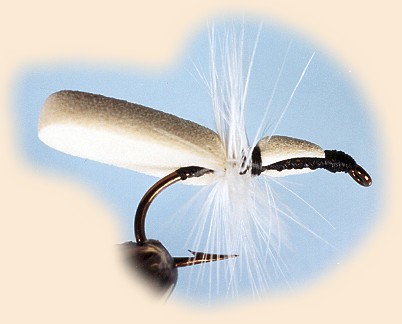|
Over the past 50 years I've spent a considerable amount
of my fishing time each spring chasing bluegills. In
the beginning I used my spinning gear, rarely ever my
fly rod. My bait of choice in those early years was
a small chunk of nightcrawler. I used a bobber and
thoroughly enjoyed fishing for bream.
Somewhere along the way I discovered smallmouth bass
in Idaho's Snake and Boise river systems. I also
discovered a local creek where I could seine shiner
minnows. I combined the shiners and the smallmouth
into many pleasurable hours of fishing. I still feel
there is nothing more exciting than watching a
smallmouth pull a bobber under. It did take me a
few trips to learn patience on the take of Mr. Bronzeback.
Until I learned to wait for the second "take," I missed
a lot of fish. An old-timer watched me miss four or
five strikes in a row one day. He explained to me
that when a bass takes a live minnow, the first
"take" is to stun the minnow. The fish then releases
the prey and positions itself to swallow the bait
head first. That's when you count five and strike.
I also learned to fish both crappie and bluegill with
the smaller minnows. Crappie are fine in the skillet,
but not nearly as much fun to catch as bream.
Then in the mid-60s' a friend introduced me to float
tubing for trout. It didn't take me long to adapt
tubing techniques for my bluegill fishing.
At first I spent most of my time fishing sinking lines
and wet flies. About that time I had the good fortune
to fish with several of the top float tubers in
southern Idaho. I learned bluegill fishing from
several of these anglers, including the legendary
Ruel Stayner. Ruel taught me to use small bluegill
poppers and fish next to the weed beds and tules.
Ruel explained to me that the bluegill's lifestyle
is more in tune with trout than any of the other
warm water fish.
"Bluegill," Ruel explained to me on one of our first
bream outings, "will feed on basically the same aquatic
insects as any of the members of the trout family."
He explained that the best wet flies to use for bream
include imitations of leeches, damsel nymphs, dragonfly
nymphs, backswimmers, mayfly nymphs and caddis pupas.
He also mentioned that when fishing for larger bluegill,
his namesake pattern, the Stayner Ducktail, is by far
his most productive fly.
But Ruel also spent much of his time fishing floating
lines and some type of floating fly pattern. While
he liked small poppers, Ruel would also fish traditional
dry patterns like the Royal Wulff and the Humpy.
While I stayed pretty much with small poppers for a
couple of seasons, I picked up some floating ant bodies,
and tried tying some "spiders." I had a little trouble
with the rubber legs, so one evening at my vise I had
a brilliant idea. I tied on a white ant body and
dressed it with white saddle hackle. I thought it
looked great. A whole bunch of fish (about 50 or 60
according to my journals) agreed with me on my next
bream trip.
During the following months, I dressed the same pattern
in black, orange, green, yellow and brown. When I began
to tie flies commercially, my Taylor bluegill spider
became one of my most successful patterns. When I
operated a Boise fly fishing shop in the early 80s',
I spent many a lunch hour tying spiders at my desk
while customers waited patiently to go fishing.
I still see no reason to "waste" the more fragile
floating dry flies on bluegill, when the spider works
so well. It is extremely durable, and when the hackle
wears out, a new one can be installed in less than a
minute. I have Taylor spiders in my bluegill box that
have been repaired numerous times.
While bluegill can be taken on floating flies all
season long, my favorite time to use the Taylor spider
is when bream are on their beds. In my area, that
occurs about the 1st of May. The larger bulls who
are guarding the nests become extremely antagonistic
towards anything that invades their nest site.
Taylor Bluegill Spider

Hook: Mustad 94840 (or equivalent), Size 10.
Thread: Black (or matching color), 6/0, prewaxed.
Body: Large ant floating rubber bodies, white,
orange, yellow, black and brown.
Hackle: Saddle hackle to match body color,
four or five wraps. ~ Marv
About Marv
Marv Taylor's books, Float-Tubing The West,
The Successful Angler's Journal,
More Fragments of the Puzzle, (Volume I) and More
Fragments of the Puzzle, (Volume II) are all available from
Marv. You can reach Marv by email at
marvtroutman@juno.com or by phone: 208-322-5760.
|



